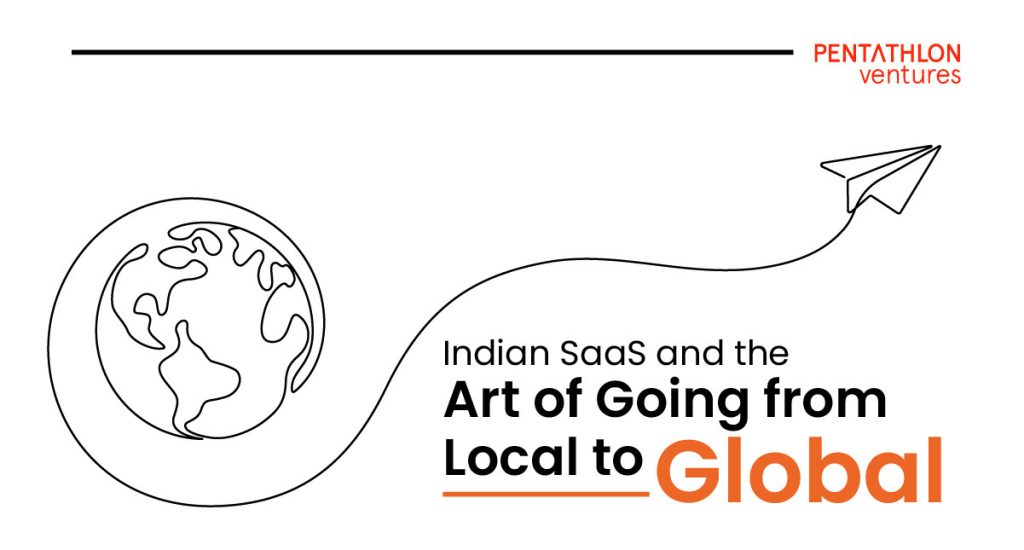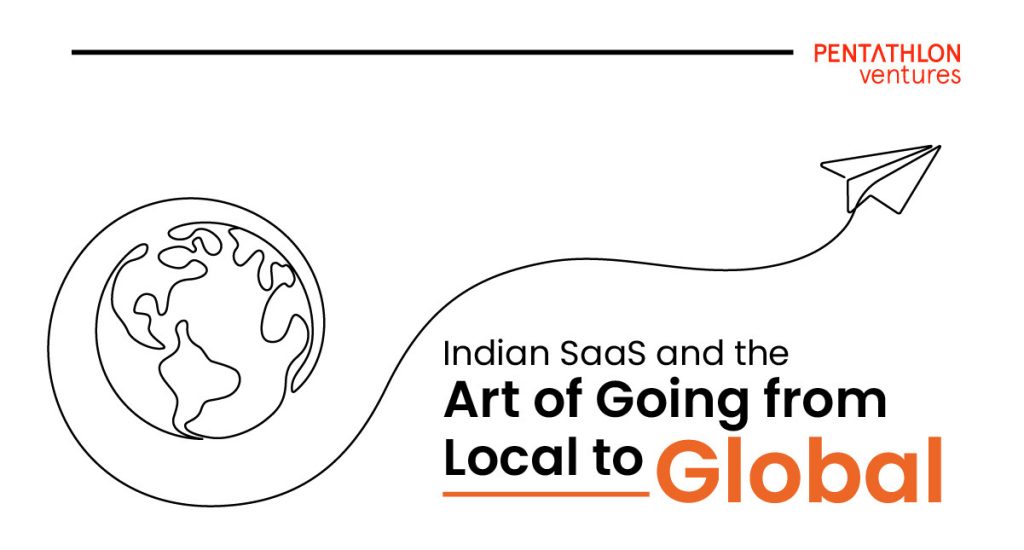
Written for Inc42 Media
Author: Sandeep Chawda
Think about it: in today’s digital world, SaaS businesses are like globetrotters with endless possibilities. For Indian SaaS companies, the whole world is a playground waiting to be explored. Now, they’re stepping up as global game-changers, ready to take on the world’s best.
Choosing the Right Markets: Precision Over Spread
Assuming that the product was conceived and its use cases were chosen with global applicability in mind, smart global expansion starts with pinpointing the right markets.
It’s about digging into the nuances of each potential market and finding where your product can shine brightest. Think of this as a treasure hunt where the prize is a market ripe for your offering.
- Market Research: The First Step
Begin with comprehensive market research. Understand the local business environment, consumer behavior, and existing competition. This groundwork is not merely academic; it’s a practical blueprint that guides your entry strategy.
- Assessing Market Fit
Next, evaluate how well your product fits into the chosen market. Does it solve a local problem? Can it outshine local competitors? This fit is crucial – a misstep here could mean squandered resources and lost time.
Just keep in mind that the most sought-after market, which is the US, might not be the best stepping stone for you outside India. It could be the GCC countries, South East Asia or, Say Japan.
Choosing the Right Go-To-Market Approach
Establishing the face of your company and the go-to-market channel for overseas markets is always key.
Different SaaS ventures have had success with different approaches and you will need to think of what will work best for you.
- Feet-on-Street Approach: In this case, your first hire in any new market should be a sales leader. They’re the ones who can take your product and weave it into the local fabric. They need to be more than just good at sales; they need to be great at adaptation and understanding the local business pulse.
This approach works very well if you can find the right Sales leader and they start clicking for you. But this might not always be the case. While you might do all the diligence while hiring this leader, there are many many reasons why it will be challenging, at least in the beginning. The cost of failure is also very high if you take 2-3 quarters to notice that it isn’t working out.
- Reseller approach: Many SaaS companies are finding success with this. There is an advantage if you can strike an arrangement of rev-share rather than retainership with the channel partner. This way it is more success-oriented and brings in accountability from the partner.
Look for channel partners who have experience selling/servicing the domain of your target customer profile.
Having a good channel partner does not take away the need to have your sales team/head getting involved in closing the deals. Be ready to make multiple trips to the new geography to support your channel partner. Initially, you will have to enable them to be successful in selling your product.
- Marketing-led Sales: This works very well when you are selling to small and medium businesses. The right kind of targeted marketing efforts bring your customers to sign up for the product and then a PLG approach converts them to paid customers and later growth within the customer base. This is not effective if the product is targeting large enterprises or is having significant efforts while onboarding the customer to the product. But the good thing is this approach can be started while still in India.
Embracing Cultural Diversity: The Key to Getting Quick Customers
Every market has its own rhythm and rules.
Adapting to these cultural nuances can make or break your global venture. What flies in India might flop in France. In the US, aggressive sales tactics might be the norm, but in Japan, it’s all about building trust and relationships.
So, if you’re to follow any mantras — follow these:
- Tailor your marketing and sales approach to each culture.
- Understand and respect local business etiquette and practices.
Localization: Tailoring Your SaaS for the World
It’s all about making your SaaS solution feel homegrown in every market.
This goes beyond translation — make your product feel like it was built for that market from the ground up.
Customization: From user interface to customer support, every aspect should speak the local language, metaphorically and literally.
User Experience: Ensure that the product experience aligns with local preferences and expectations.
For example, in Germany, integrating data privacy features aligns with the stringent GDPR laws, while in India, accommodating diverse languages within your platform can be a game-changer.
So, to localize effectively:
- Research local user behavior and preferences,
- Adapt your user interface and customer support to local languages and customs,
- And ensure compliance with regional laws and regulations.
Building Robust Support Systems
As you enter new markets, robust customer support becomes your backbone. This isn’t just about being available; it’s about being accessible in the way your new customers expect.
- Multilingual Support: Offer support in local languages. This is where your product starts speaking your customer’s language, quite literally.
- Time Zone Coverage: Ensure that your support team is available when your customers need them, irrespective of time zone differences.
Pricing Strategy for Diverse Markets
In international markets, pricing can be a tightrope walk.
It’s a mix of perceived value, market demand, and local economic conditions. A one-size-fits-all approach won’t work; pricing needs to be as dynamic and varied as the markets you enter.
Develop pricing models that are flexible yet competitive. In some markets, your product might warrant a premium price, while in others, a more cost-effective approach might be necessary to gain a foothold.
Analyze how local markets perceive value and set prices that reflect that while maintaining competitiveness. Be open to adjusting your pricing models to suit different market dynamics.
Forging Partnerships and Alliances
Sometimes, the fastest way to expand globally is to join hands with those who already know the terrain. Strategic partnerships can be a game-changer.
- Local Partners: Collaborate with local businesses that complement your offerings. This could be the key to unlocking market potential.
- Global Alliances: Form alliances with global players to enhance your market reach and credibility.
Navigating Regulatory Landscapes
Different countries mean different regulations.
Navigating this regulatory labyrinth is crucial. It’s about more than compliance; it’s about understanding how these regulations affect your product and your business.
- Legal Expertise: Invest in legal expertise to navigate the complex web of international laws and regulations.
- Data Privacy: With regulations like GDPR in Europe, data privacy can’t be an afterthought. It’s central to your operations.
And, What About A Global Brand Presence?
As you expand, your brand needs to resonate globally. This is about crafting a narrative that aligns with your global aspirations and is relatable across cultures.
- Consistent Messaging: While adapting to local markets, ensure your brand’s core message remains consistent and strong.
- Global-Local Balance: Strike the right balance between maintaining a global brand appeal and local relevance.
Expanding your Indian SaaS company globally is a mix of art, science, and a lot of ground reality checks. It’s about understanding where your product fits in the global puzzle, finding the right people to take it there, adapting to every new cultural landscape, localizing your offering to perfection, and pricing it right. This is more than expansion; it’s about making your mark on the global SaaS map.
